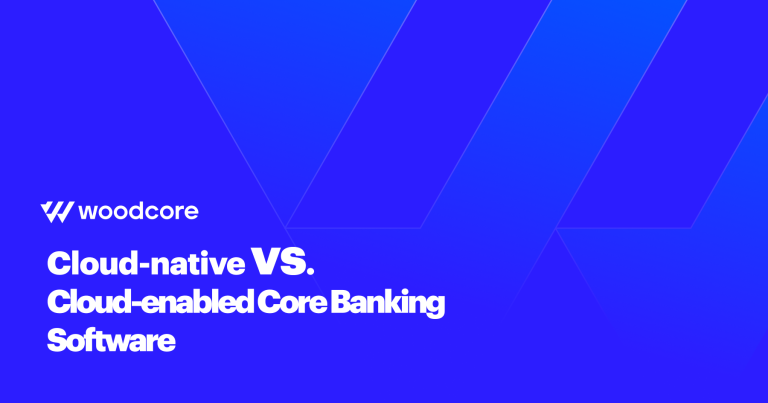The financial services industry is undergoing a significant transformation, driven by the rapid adoption of cloud technology. According to Capgemini’s World Cloud Report – Financial Services 2023, 91% of financial services executives say they have partially or fully embraced cloud technologies.
At the center of this shift are cloud-native core banking applications — modern platforms that promise enhanced flexibility, faster innovation, and improved customer experiences. But what does cloud-native really mean in this context? And why does it matter?
In this post, we’ll break down what cloud-native applications are, how they differ from traditional core banking systems, and why they’re critical for the future of financial institutions.
What Does Cloud-Native Mean?
Cloud-native refers to a method of designing, building, and running applications specifically optimized for cloud environments. Unlike legacy applications that were built for on-premise infrastructure and later moved to the cloud, cloud-native systems are born in the cloud — designed to take full advantage of cloud scalability, resilience, and speed.
What Are Cloud-Native Core Banking Applications?
Cloud-native core banking applications are purpose-built to run entirely in the cloud. They handle mission-critical operations like account management, transaction processing, customer data, and compliance, but do so in a way that’s modular, scalable, and inherently flexible.
Key Characteristics of Cloud-Native Core Banking Systems
Microservices Architecture
Cloud-native applications are composed of microservices — small, independent services that handle specific business functions like account management or customer support. This modular structure allows banks to develop, deploy, and scale services independently, enabling faster updates without disrupting the entire system.
Think of microservices as digital Lego blocks: easy to assemble, modify, or replace as needed.
API-First Integration
APIs act as the connective tissue between services, allowing different systems to communicate seamlessly. An API-first approach enables banks to quickly integrate with fintech partners, regulatory systems, and customer-facing apps — creating richer, more connected ecosystems.
Containers and Orchestration
Containers package applications with all necessary dependencies, ensuring they run consistently across environments. Tools like Kubernetes orchestrate these containers, managing scaling, availability, and updates.
This makes deployment more predictable, portable, and efficient — especially in complex environments.
Service Meshes
As microservices grow in number, service meshes help manage secure communication between them. They handle load balancing, service discovery, and encryption, improving performance and reliability across the banking infrastructure.
Immutable Infrastructure
With immutable infrastructure, once a system component is deployed, it’s never modified in place. Instead, updates are rolled out by replacing components with new versions. This ensures higher consistency, better traceability, and fewer configuration errors.
DevOps & CI/CD
Cloud-native development leverages DevOps principles and automated Continuous Integration/Continuous Delivery (CI/CD) pipelines. This allows banks to release features faster, respond to regulatory changes quickly, and maintain robust system stability.
Serverless Computing
Serverless platforms let developers deploy code without managing servers. Banks only pay for actual usage, scaling resources up or down automatically based on demand — reducing costs and complexity while improving responsiveness.
Cloud-Native vs. Traditional Core Banking
Here’s how cloud-native systems compare with legacy banking software:
| Feature | Traditional Core Banking | Cloud-Native Core Banking |
|---|---|---|
| Architecture | Monolithic, tightly coupled | Microservices-based, loosely coupled |
| Scalability | Requires hardware upgrades, downtime | Scales dynamically based on demand |
| Flexibility | Rigid, difficult to modify or extend | Highly modular and adaptable |
| Deployment | Manual, slow, risk-prone | Automated, frequent, and reliable via CI/CD |
| Cost Model | High upfront CapEx and maintenance costs | Pay-as-you-go pricing, reduced infrastructure burden |
| Resilience & Availability | Physical redundancy, manual recovery | Built-in fault tolerance and disaster recovery |
| Integration | Complex, middleware-dependent | API-driven, easy third-party integration |
| Innovation Speed | Slow due to long development cycles | Rapid iteration and feature delivery |
Why Cloud-Native Matters for Financial Institutions
Cloud-native banking platforms aren’t just a technology upgrade — they’re a strategic enabler. Here’s why this matters:
- Faster time-to-market: Release new products and features in weeks instead of months.
- Better customer experience: Rapid iteration and integration lead to more responsive, tailored services.
- Improved operational efficiency: Automate routine processes, reduce infrastructure overhead, and scale seamlessly.
- Stronger compliance posture: Quickly adapt to regulatory requirements through modular changes.
- Future-ready architecture: Stay competitive by partnering with fintechs and adopting new technologies with ease.
Conclusion
As the financial sector continues to evolve, cloud-native core banking platforms are becoming essential for staying agile, competitive, and customer-centric. By embracing cloud-native principles — microservices, APIs, containers, automation — banks can unlock a new era of innovation and resilience.
The question for banking leaders is no longer if they should go cloud-native, but how fast they can get there.








Leave a Comment